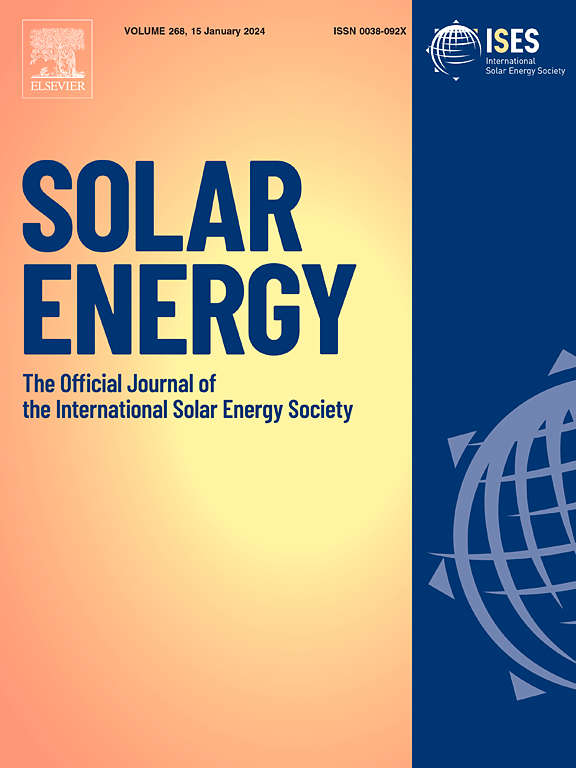热致变色VO2纳米复合窗口涂料的水热合成及其节能潜力
IF 6
2区 工程技术
Q2 ENERGY & FUELS
引用次数: 0
摘要
在有供暖和制冷需求的气候区,采用动态窗户可以显著受益。与连续薄膜相比,热致变色二氧化氧纳米复合涂层因其提高可见光透过率和太阳调制的能力而受到人们的关注。然而,加工具有理想热致变色性能的二氧化氧纳米颗粒仍然具有挑战性。本文详细介绍了水热法合成VO2结构,系统考察了反应温度、反应时间、钨掺杂量、还原剂类型、钒浓度、前驱体ph等实验参数。结果表明,以酒石酸为还原剂,在280℃下反应72 h,得到了性能最好的棒状颗粒膜。初始钒浓度增加一倍,提高了颗粒的结晶度和VO2 (M/R)相含量。在单步合成中,钨掺杂对制备所需的M/R相起着至关重要的作用,而降低前驱体溶液的pH可以产生均匀的VO1.7(OH)0.3颗粒,这些颗粒在空气中250℃低温退火30 min后成功转化为VO2 (M/R)。性能最好的薄膜表现为相变温度为40°C,太阳调制能力为7%,可见光透过率为44%,在温带气候下,根据当地天气条件,每年可节省高达23%的能源。本文章由计算机程序翻译,如有差异,请以英文原文为准。
Hydrothermal synthesis and energy saving potential of thermochromic VO2 nanocomposite window coatings in temperate North American climates
Buildings in climate zones with both heating and cooling demands could significantly benefit from adopting dynamic windows. Thermochromic VO2-based nanocomposite coatings have gained attention for their ability to enhance visible transmittance and solar modulation compared to continuous films. However, processing VO2 nanoparticles with the desired thermochromic properties remains challenging. This article details the hydrothermal synthesis of VO2 structures and systematically investigates several experimental parameters, including reaction temperature and duration, tungsten doping level, reductant type, vanadium concentration, and precursor pH. The results indicate that the best-performing film was obtained using rod-like particles processed at 280 °C for 72 h, with tartaric acid as a reducing agent. Doubling the initial vanadium concentration improved the crystallinity of the particles and VO2 (M/R) phase content. Tungsten doping played crucial role in fabricating the desired M/R phases in a single-step synthesis, while lowering the precursor solution’s pH produced uniform VO1.7(OH)0.3 particles, which were successfully transformed into VO2 (M/R) after a brief low-temperature annealing at 250 °C for 30 min in air. The best-performing film exhibited a phase transition temperature of 40 °C, a solar modulation ability of 7 %, a visible transmittance of 44 %, and potential annual energy savings of up to 23 % in temperate climates, depending on the local weather conditions.
求助全文
通过发布文献求助,成功后即可免费获取论文全文。
去求助
来源期刊

Solar Energy
工程技术-能源与燃料
CiteScore
13.90
自引率
9.00%
发文量
0
审稿时长
47 days
期刊介绍:
Solar Energy welcomes manuscripts presenting information not previously published in journals on any aspect of solar energy research, development, application, measurement or policy. The term "solar energy" in this context includes the indirect uses such as wind energy and biomass
 求助内容:
求助内容: 应助结果提醒方式:
应助结果提醒方式:


